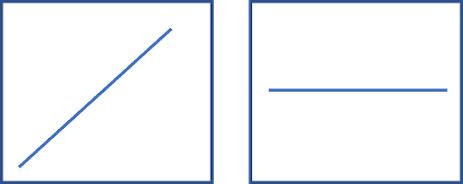Over time Eli the Wise has noted a great deal of confusion about Mike's Nature Trick (TM Phil Jones). Here for example is James Delingpole being confused
Pretty much lots of lagomorphs get this wrong, except for those who follow Eli on Twitter and a few select others, but even people like Phil Jones and Skeptical Science do.
The key thing is that proxy records are calibrated against instrumental records and if there had not been a significant change in temperature in the instrumental record period this could not have been done. You cannot calibrate a change or variation or anomaly against a constant independent variable, all you get is the corresponding value of the proxy at one point and no information about how the dependent variable changes with a change in the independent variable that one is calibrating against.
There was something of a conversation about this at
Jame's Empty Blog about one of Nic Lewis' Curry tricks,
Eli got into it with the sorely missed
Pekka Pirilä (just saw a paper of his on a recent email, it's been five years since he died, may memory of his wisdom remain)
If the temperatures were as constant as in the handle of the hockey stick all proxy recalibrations would fail or to use another term, be uninformative, and, if you look at the hockey stick, it is pretty clear that would be close to the case if all we had was data from the handle.
A key step in MBH was to use the instrumental records to build a 2D record of surface temperature variability (anomalies) against which the instrumental data was calibrated. Unfortunately, IEHO, they used Jones' sparse instrumental record from 1992 which degraded the resolution of the reconstructed anomaly patterns but there really was not much else to be had, and GISS only went back to 1880.
Eli has often wondered about whether if a paired design, such as the USCRN was used, would that improve the reconstructions (there may not be enough stations close to each proxy). Another problem is that Jones' data set is notoriously weak in the polar regions where the changes are larger (and where a lot of the proxys were located)
Calibration was done against the instrumental record from 1902 to 1980, validation against the instrumental record from 1850 to 1902. Looking at the global HADCRUT in the validation period (Wood for Trees), it is pretty flat. The calibration period is better, but still not much of a change because it only goes to 1980. Still remember that the calibrations were done against regional temperatures which are more variable.
Going back to the future it is interesting to look at the higher resolution Berkeley Earth instrumental reconstruction for the Yamal Nenets region that was also the subject of some unpleasantness about a decade ago
This is really flat in the validation period and thus pretty useless. The correlation coefficient for a flat curve is zero which sheds some light about why the too and fro about correlation was empty air. All you have left is the small and noisy annual variation masked by local precipitation variations. Importantly Mann Bradley and Hughes included precipitation in the 2D variation record they used for calibration
So let Eli return to Delingpole's no ethical scientist bit about plotting proxy and instrumental data in the same figure. What the overlay shows is that the calibration works. Sort of basic, but this point has gotten lost in the wash.
Well, what about that the overlay stop at 1960? It was known by 1998 that a lot of the tree ring records started to diverge from the temperature about then, the so called divergence problem.
The bottom line here is it can be assumed that the divergence started in 1960, or that the tree rings were not correlated to local temperatures at (m)any times earlier than 1880. If that were so, the variation in the tree ring records would diverge from the variation in the other proxys and they don't.
Thus Mike's Real Nature Trick, correlating proxy records against a 2D model of surface temperature and precipitation variations.





